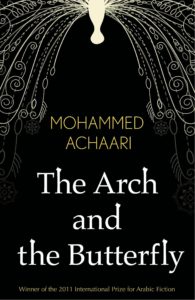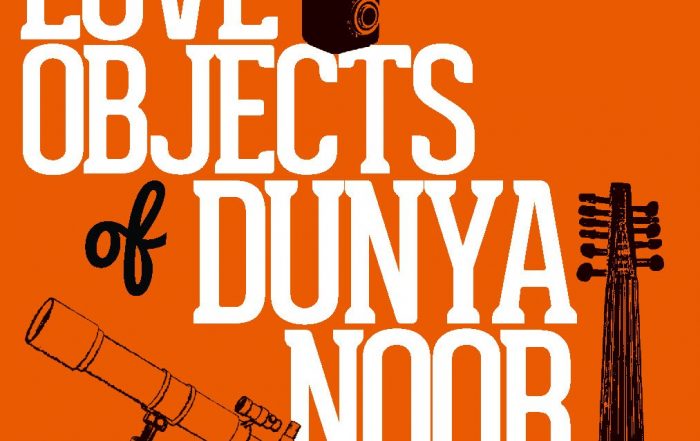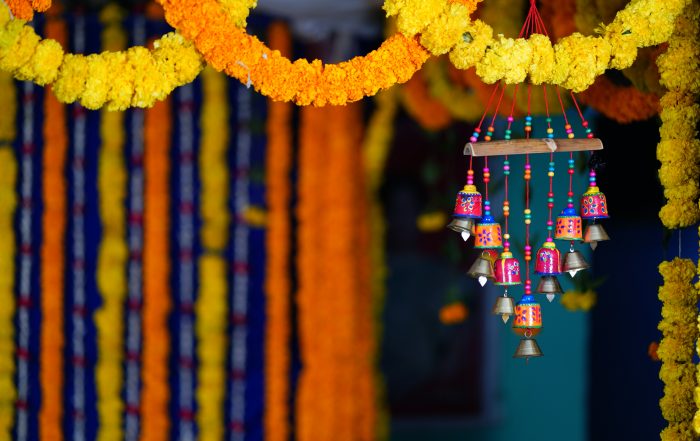The Arch and the Butterfly represents a fine example of the maturity of the contemporary Moroccan novel, both in its aesthetics and its politics. It is a beautifully written novel that was recognized for the mastery of its craft in 2011 when it was awarded the International Arabic Booker Prize.
Mohammed Achaari is well known in Morocco both in political and literary circles. Born in Zarhūn in 1951, he belongs to the generation of left-wing militant activists of the 1970s and 1980s, many of whom were imprisoned during Morocco’s repressive Lead Years. This period, called in Arabic Sanawāt Al-rāsās, refers to the 1970s and 1980s during King Hassan II’s powerful grip on power and the brutal oppression of political dissidents in Morocco. Achaari worked as a left-wing journalist before becoming minister of culture representing the centre-left USFP (Socialist Union of Popular Forces) from 1998–2007, when he finally gave up his parliamentary seat. He has also served as the president of the Moroccan writers’ union (1989–1996). Known primarily as an accomplished poet with nine poetry collections and a collection of short stories (Yawm Sa‘b or Difficult Day, 1991), he has also produced two novels, Janūb al-rūh (The Soul of the South, 1996) and Al-Qaws wa al-Farāsha (The Arch and Butterfly, 2010).
The novel does not espouse an overtly political message; rather its politics are subtly intertwined with its aesthetic complexity, its creative poetic literary style and its innovative use of the Arabic language. In other words, the novel’s form and content are playfully interlocked, creating an engaged artistic, social, and political narrative.
The Arch and the Butterfly represents a fine example of the maturity of the contemporary Moroccan novel, both in its aesthetics and its politics. It is a beautifully written novel that was recognized for the mastery of its craft in 2011 when it was awarded the International Arabic Booker Prize, jointly with Raja Alem’s Tawq al-hamām (The Doves’ Necklace, 2011). It is a work of dissent in its reflection of the various forms of violence inflicted on Moroccans in recent history, whether this violence be political, social, physical, or economic. It is especially symbolic in its use of the suppressed histories of the indigenous Amazigh people, particularly those of the Rif region. It is also critical of the political and ideological vacuum dominating the current Moroccan political scene after the co-optation of the traditional left-wing opposition parties such as the USFP, which is generally seen to have lost its credibility and independence. The novel’s discourse is marked by a tacit tension. On the one hand, the novel develops a subtle political and social critique of the plight of the left and the defeat of its revolutionary secular project in postcolonial Morocco. On the other hand, the novel presents an elitist representation of Islamist currents marked by mistrust and hostility.
The novel’s opening scene starts with the main character and narrator Yūsuf al-Firsīwī, a leftwing journalist in his 50s living in the city of Rabat, reading an anonymous letter informing him that his only son Yāsīn, who is supposed to be studying engineering in a prestigious college in France, had died as a ‘martyr’ in Afghanistan fighting for Al-Qaida. Yūsuf’s shock at the sudden and violent death of his son and his inability to understand his son’s act has destroyed the fragile balance of his life (including his own marriage). It pushes him to question his own life and that of his generation, the generation of Moroccan left-wing dissidents in the 1970s and 1980s and their fate. Yūsuf’s mourning of his son’s death becomes a collective act of mourning an entire generation of left-wing political activists who have either been co-opted into the system, or have given in to defeat and despair because of their inability to do anything about the social, economic and political problems engulfing the country. The novel is often referred to in general introductions as a novel about terrorism and its effects on society in Morocco, whereas, in fact, the focus of the novel lies elsewhere. Terrorism in the novel is used as a window through which to reflect on the crisis in Moroccan postcolonial society, a society marked by blatant political and economic corruption, uncontrolled capitalism and chaotic urban development.
The novel does not espouse an overtly political message; rather its politics are subtly intertwined with its aesthetic complexity, its creative poetic literary style and its innovative use of the Arabic language. In other words, the novel’s form and content are playfully interlocked, creating an engaged artistic, social, and political narrative. Achaari’s novel can be read in conjunction with the works of Abdellatif Laabi, Mohamed Berrada and Ahhmed Madini in their lament of the defeat and co-optation of the left, which has lost its credibility, vision, intellectuals (who have largely become part of the system), and the efficacy of its traditional modes of activism.
The Arch and The Butterfly (In Arabic: al-Qaws wa’l-Farasha published 2010) by Mohammed Achaari. Translated by Aida Bamia (Bloomsbury Qatar Foundation Publishing, Doha, 2014)
Buy the book
Your Content Goes Here
Relevant posts
How Love is Revolution: The Unexpected Love Objects of Dunya Noor
The novelist Rana Haddad writes about her novel, "The Unexpected Love Objects of Dunya Noor" for the MULOSIGE project.
Editorial for Special Issue of ‘Foreign Literatures’ on Indian Literature
Simon Leese translates ‘This issue’ (editorial for special issue on Indian Literature) by ʿAlī ʿUqlah ʿUrsān (Ali Ukla Ursan) al-Ādāb al-ajnabīyah 54 and 55, Winter [1987] and Spring 1988: 3-8. The original essay can
The Development of Arab-Indian Cultural Relations
Simon Leese translates Taṭawwurāt al-ʿalāqāt al-thaqāfīyah al-ʿarabīyah—al-Hindīyah (The Development of Arab-Indian Cultural Relations) by Mohiaddin Alwaye in al-Risālah 1083, 15th October 1964: 15-17, 20. The original essay can be found at the Alsharekh.org archive.






Great article